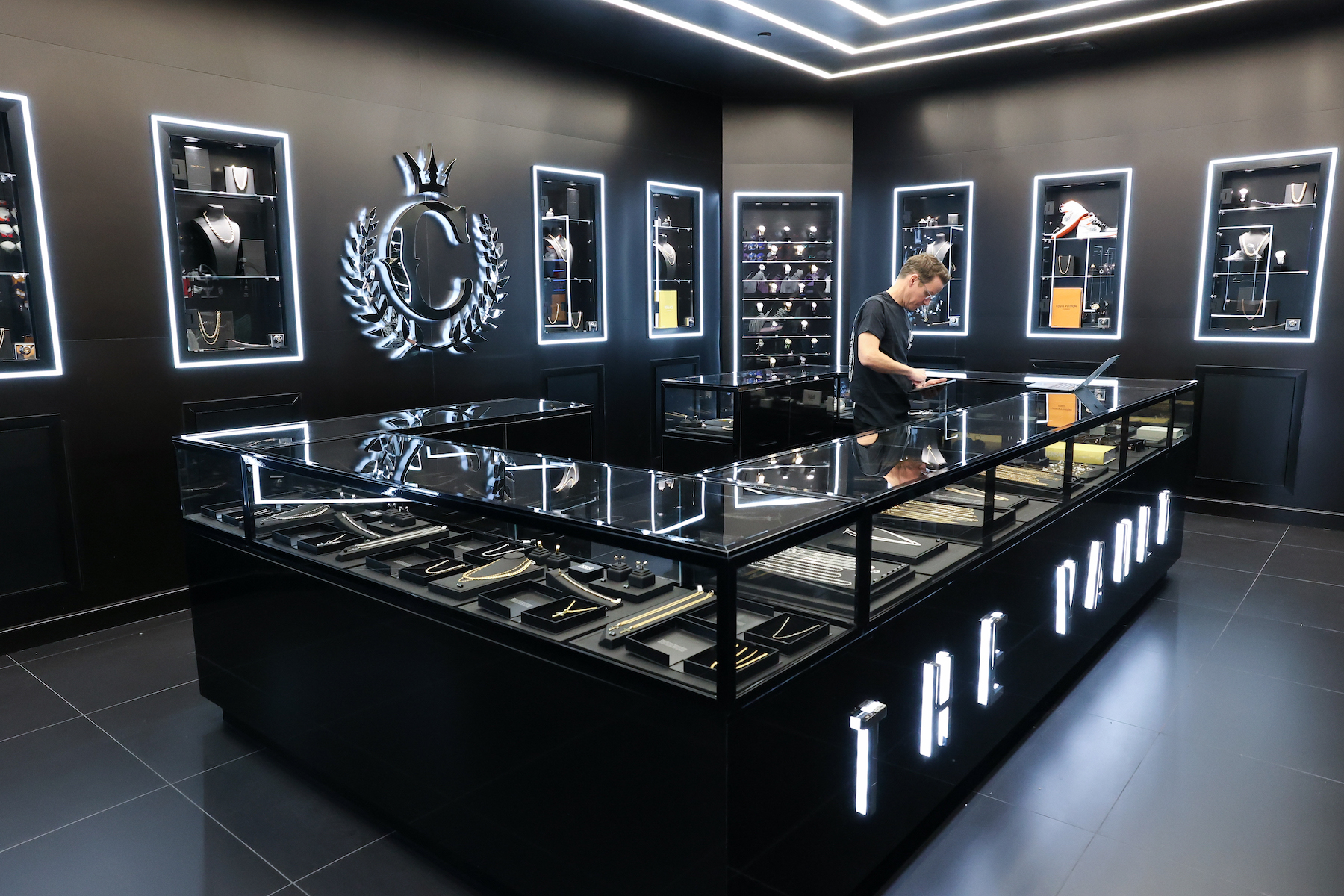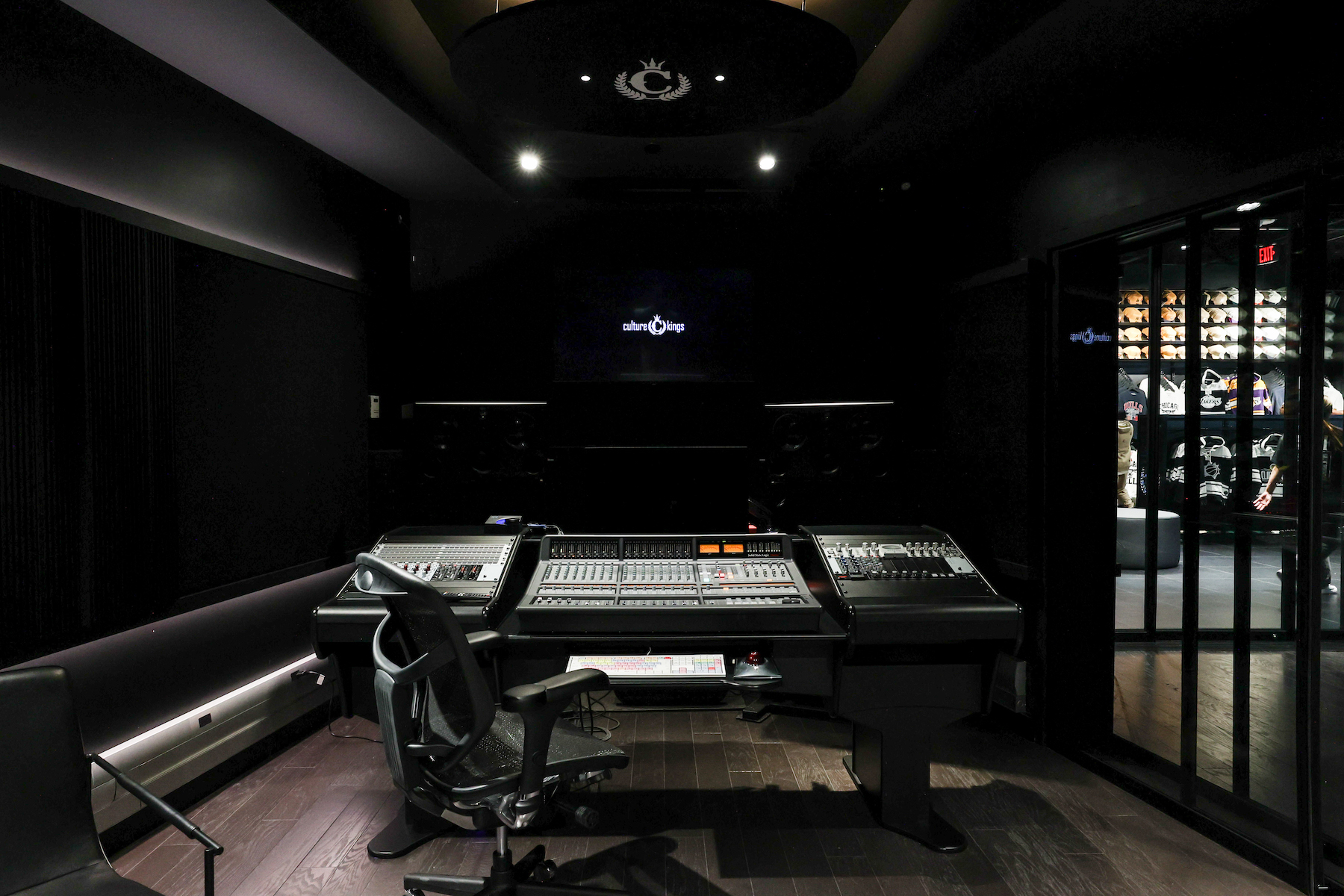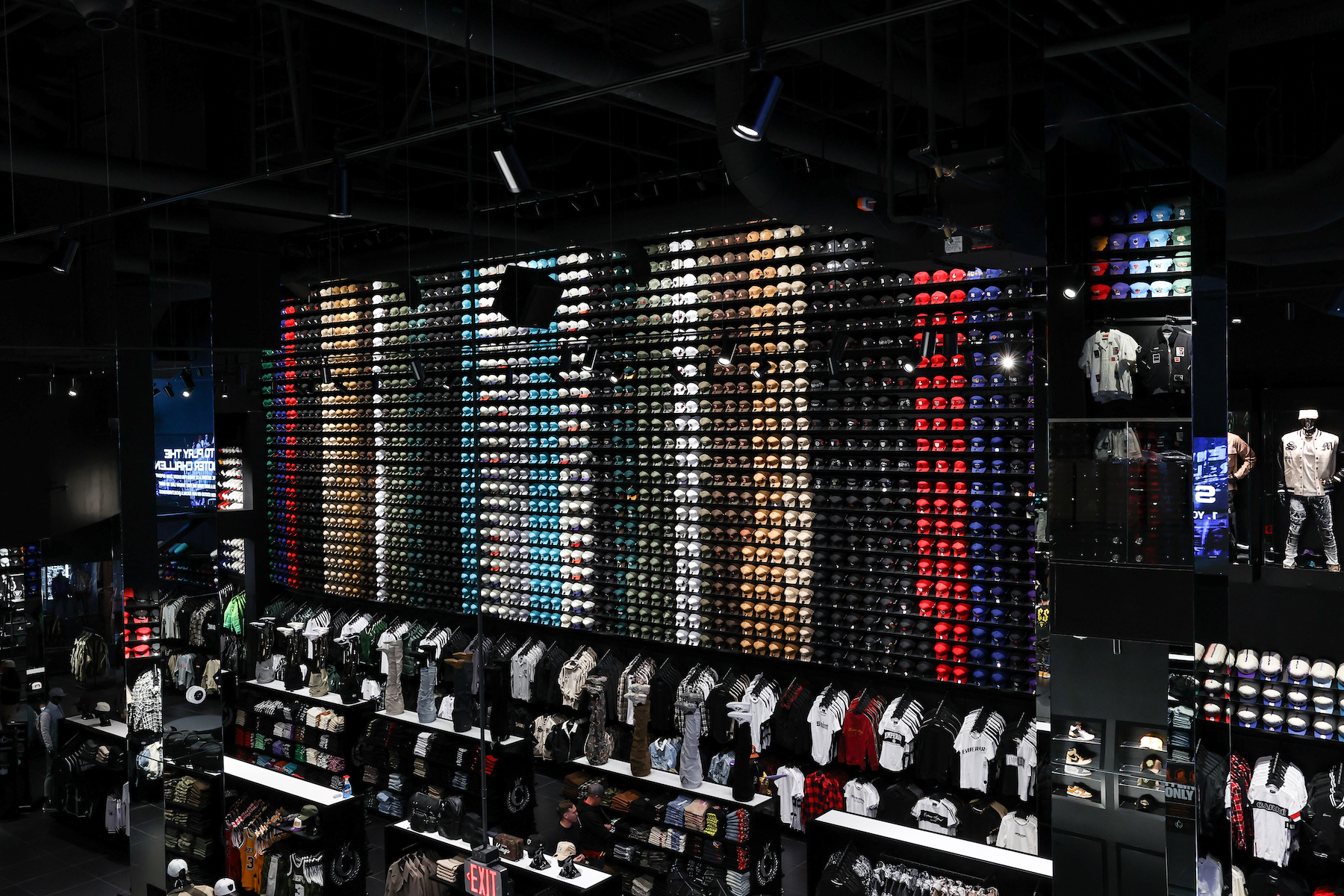Shawmut Design and Construction has been active in the Las Vegas market for nearly 15 years. And it’s safe to say, during that stretch, that Shawmut hadn’t built a retail store whose merchandise assortment includes 11,000 hats, and whose amenities include a state-of-the-art recording studio.
Those are two features of Culture Kings, the renowned streetwear brand based in Brisbane, Australia, which in early November opened its U.S. flagship store at The Forum Shops at Caesars in Las Vegas. Shawmut worked with bokor architecture + interiors (the design architect for Culture Kings’ stores in Australia and New Zealand) and Vegas-based Bunnyfish Studios (the AOR on the project) to create the two-story immersive space that had previously been occupied by four tenants, including an art gallery.
Culture Kings’ stores Down Under, as well as its wider online presence, have popularized the brand among celebrities in the sports, fashion, music, and entertainment worlds. DJs perform daily in each of its stores, whose luxury space, known as “The Vault,” displays the latest in men’s and women’s jewelry, watches, and other accessories. The stores offer over 100 leading brands and 2,000-plus styles of apparel and footwear, including 18 proprietary brands.
U.S. store adds some flourishes

The store in Las Vegas, which took eight months to complete, is Culture Kings’ ninth, and, according to Eric Geisler, a Director at Shawmut’s office in Las Vegas, is “very similar” to the stores in Australia and New Zealand. It includes a half basketball court and a 75-ft-tall hat wall. Interactive games allow customers to play to win products. The 25,000-sf store, with 14,000 sf of retail space, is distinguished by a large staircase with LED-clad risers, a mirrored tunnel hallway that leads patrons to a “Secret Room” with exclusive merch (a feature that the chain introduced at its Auckland, New Zealand, store last year), a jumbotron and more than 50 LED screens that livestream the latest work produced by music and video artists.

Geisler tells BD+C that his team traveled to Australia to tour Culture Kings’ stores there and to pick up on the “vibe” they send out to their customers. “The company wants to create an atmosphere that makes you want to hang out in the stores.”
To that end, the recording studio and bar are unique to the Vegas store, as is a footwear customization lounge. Throughout the store, black floor tile and metal work put the focus on the products and Culture Kings’ content. Geisler says the biggest challenge during construction was “figuring out where things went.”
A pivotal moment for growth?

Simon Beard, Culture Kings’ cofounder and CEO, who launched the company in 2008, told the Las Vegas Review-Journal that the cost of the Las Vegas store (which he didn’t reveal) was more than the combined total for its stores in Australia.
The Vegas store is nestled in The Forum Shops at Caesars between a Fat Tuesday restaurant and an Urban Necessities retail outlet. Culture Kings—which currently generates most of its revenue online, according to the Review-Journal—hasn’t disclosed if it has expansion plans for North America. But it’s worth noting that the company was acquired last year by a.k.a. Brands Holding Corp., which has a reputation for being a retail accelerator.
“This is a pivotal moment for Culture Kings,” a.k.a. Brands’ CEO Jill Ramsey said in a statement about the Vegas store opening. “Consumers are interacting with brands on a different level, and Culture Kings is transforming traditional retail in an unforgettable, immersive experience that can’t be replicated. I’m excited to watch the brand take off in the U.S. and globally.”
Related Stories
| Nov 25, 2013
Building Teams need to help owners avoid 'operational stray'
"Operational stray" occurs when a building’s MEP systems don’t work the way they should. Even the most well-designed and constructed building can stray from perfection—and that can cost the owner a ton in unnecessary utility costs. But help is on the way.
| Nov 19, 2013
Top 10 green building products for 2014
Assa Abloy's power-over-ethernet access-control locks and Schüco's retrofit façade system are among the products to make BuildingGreen Inc.'s annual Top-10 Green Building Products list.
| Nov 15, 2013
Greenbuild 2013 Report - BD+C Exclusive
The BD+C editorial team brings you this special report on the latest green building trends across nine key market sectors.
| Nov 15, 2013
Metal makes its mark on interior spaces
Beyond its long-standing role as a preferred material for a building’s structure and roof, metal is making its mark on interior spaces as well.
| Nov 13, 2013
Installed capacity of geothermal heat pumps to grow by 150% by 2020, says study
The worldwide installed capacity of GHP systems will reach 127.4 gigawatts-thermal over the next seven years, growth of nearly 150%, according to a recent report from Navigant Research.
| Oct 30, 2013
11 hot BIM/VDC topics for 2013
If you like to geek out on building information modeling and virtual design and construction, you should enjoy this overview of the top BIM/VDC topics.
| Oct 28, 2013
Urban growth doesn’t have to destroy nature—it can work with it
Our collective desire to live in cities has never been stronger. According to the World Health Organization, 60% of the world’s population will live in a city by 2030. As urban populations swell, what people demand from their cities is evolving.
| Oct 25, 2013
$3B Willets Points mixed-use development in New York wins City Council approval
The $3 billion Willets Points plan in New York City that will transform 23 acres into a mixed-use development has gained approval from the City Council.
| Oct 23, 2013
Gehry, Foster join Battersea Power Station redevelopment
Norman Foster and Frank Gehry have been selected to design a retail section within the £8 billion redevelopment of Battersea Power Station in London.
| Oct 18, 2013
Researchers discover tension-fusing properties of metal
When a group of MIT researchers recently discovered that stress can cause metal alloy to fuse rather than break apart, they assumed it must be a mistake. It wasn't. The surprising finding could lead to self-healing materials that repair early damage before it has a chance to spread.

















